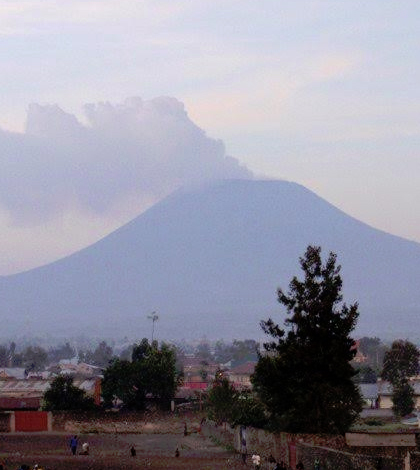Two African Natural Disasters Linked Using Radar Images

Researchers are investigating ties between two natural disasters occurring eight months apart in the Democratic Republic of Congo. (Credit: Christelle Wauthier / Penn State)
A study led by researchers at Penn State University using interferometric synthetic aperture radar has linked two large natural disasters in the Democratic Republic of the Congo with diking, according to a release. That is described as when two tectonic plates move apart and magma from inside the Earth pushes into the created space.
In January of 2002, Penn State scientists observed an eruption of the Nyiragongo volcano, which killed more than 100 people. Around eight months later, a town 12 miles away was hit by a 6.2-magnitude earthquake. Curious about the relationship between the two events, the researchers set out to investigate.
By using the radar images, scientists tabulated maps showing changes that took place in the Earth’s surface before and after each natural disaster took place. They were then able to invert the ground-surface maps to pinpoint geological links between the two events. Their analysis revealed that a 12-mile long diking intrusion was the most likely cause for the earthquake that followed the volcanic eruption.
Top image: Researchers are investigating ties between two natural disasters occurring eight months apart in the Democratic Republic of Congo. (Credit: Christelle Wauthier / Penn State)




0 comments